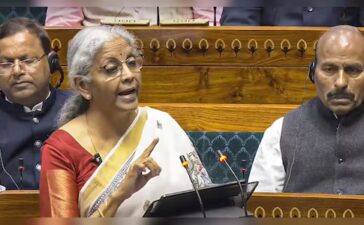By Michael S. Derby and Dan Burns
(Reuters) – The Federal Reserve said Friday in a report that there are “notable” vulnerabilities on the financial stability front, although it added the stress banks were facing last spring has receded.
The Fed report tied the vulnerabilities to borrowing levels, noting “declines in the fair values of fixed-rate assets have been sizable relative to the regulatory capital at some banks.”
But the Fed also said, “acute stress in the banking system has receded since last spring, and banks’ regulatory risk-based capital ratios remained solid and increased broadly, as bank profits were robust and banks reduced capital distributions.”
On the economy, the Fed reiterated it was committed to getting inflation pressures back to 2% and said the rate-setting Federal Open Market Committee “does not expect it will be appropriate to reduce the target range until it has gained greater confidence that inflation is moving sustainably toward 2 percent.”
The twice-yearly report to Congress comes ahead of two days of testimony by Fed Chair Jerome Powell set for Wednesday and Thursday next week. The report is typically a recap of economic developments and actions taken by the Fed in the period since the previous update given to lawmakers, but can offer fresh takes on some of the latest economic data and on subjects such as financial stability.
At the Fed’s most recent policy meeting in January, central bank staff briefed policymakers on their assessment of stability within the U.S. financial system, and according to minutes of the meeting released last week, they “characterized the system’s financial vulnerabilities as notable.”
Powell is likely to face a barrage of lawmaker questions about the Fed’s tight policy stance and expectations for easing it, a sensitive topic in a presidential election year.
A number of congressional Democrats have already been hounding Powell over high rates, complaining they are exacerbating already-poor housing affordability for low- and middle-income households. Republicans, meanwhile, have been critical about the Fed’s initially slow response to inflation and could chastise Powell over indications he may lower rates ahead of the November election.
ELECTION-YEAR RATE CUTS
The Fed’s next interest rate-setting meeting is scheduled for March 19-20, and policymakers are widely expected to leave their benchmark policy rate unchanged at 5.25%-5.5%, where it has been since July.
After raising rates aggressively to that level starting in March 2022 to combat what evolved into the highest inflation in four decades, the Fed’s next move is expected to be a rate cut sometime in the coming months. That is because inflation has made substantial progress in moving back toward their target of 2% annually, though recent price data has been uneven.
Updated projections from policymakers at that meeting should offer more clues for when officials may be ready to make their first cut in borrowing costs. Projections released at their December meeting showed a majority of officials then expected the policy rate to fall by three-quarters of a percentage point over the course of 2024, but that outlook offered no indication of when reductions might begin.
After a benign run of inflation data through the second half of 2023 led financial markets initially to position for rate cuts as early as the March meeting, the first set of inflation readings for 2024 have at least temporarily stalled some of that momentum on taming the pace of price increases.
Moreover, pushback from top Fed officials signaling no rush to cut rates while inflation progress remains bumpy and the labor market remains strong has led to a reset of market expectations. Market pricing now reflects a prevailing view that the first cut will occur in June, although a first cut at the April 30-May 1 meeting is not out of the question.
(Reporting by Michael S. Derby, Ann Saphir, Lindsay Dunsmuir and Pete Schroeder; Editing by Nick Zieminski)
















